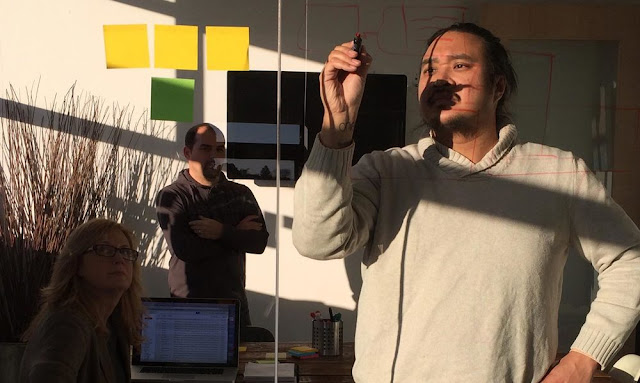As the founder of Story+Structure, CEO Chokdee Rutirasiri has been designing human-centered solutions for the private and public sectors since 1995. He's led projects resulting in new user experiences in higher education, human resources, publishing, manufacturing, health care and non-profits. Prior to founding Story+Structure, Rutirasiri held roles as a strategist, designer and developer for UMass Boston, MassArt and Worcester State College. He also spent some time on muni bond trading desks in Chicago and Boston. Rutirasiri took time to speak with CIO Insight on a variety of topics, including the elements of good design, empathy in a capitalist world and what it means to be a good host.
CIO Insight: You recently lead a discussion at the MIT Sloan CIO Symposium on taking an empathetic approach to the user experience. Can you expand a little on what that means and why it’s important to take this approach?
Chokdee Rutirasiri: Empathy is the key to opening up the wants, needs and behavior of what people are seeking in their experiences. Whether you’re a services company or a product company, at the end of the day you’re in the people business. Staff. Clients. Customers. Constituents. Stakeholders. Stockholders. All people. People are beautifully complex and ever evolving. What we say and what we do are often two different things. When you practice empathy, you begin to develop a deep understanding of those you’re serving. And with this understanding, you can be more intentional with your strategic decisions.
CIO Insight: You’re the CEO of Story+Structure, a design firm that puts a strong emphasis on human-centered design. How does this differ from other established approaches to the workplace specifically and technology in general?
Rutirasiri: Lots of times people try to solve a problem by throwing a piece of technology at it or designing for their preferences, ignoring the fact that they are not the end user. Then solutions end up being overly engineered or complicated, leading to poor user adoption. This is because you were addressing your own frustration, not your customer’s. A human-centered approach simply puts the human being right at the center of every question. What do you need? How does this make you feel? How might this solution help you reach your aspirations and goals? An empathetic approach is respectful and intentional.
CIO Insight: I understand designers Charles and Ray Eames were a big influence on you. How so?
Rutirasiri: Oh my, where does one even begin? What made the Eames Office a special shop was imagination. Charles, Ray and the whole shop looked at life in a different way.
The Top 3 lessons for me include:
1. Design flows from learning and knowing who you are serving.This is fundamental to the iterative, rapid prototyping process at the core of human-centered design. You gather information about your target audience. You prototype solutions quickly and cheaply. You test it. You find out answers to some basic questions. You learn. You go back to the design and iterate. Repeat.
2. Design is about being a good host.When you invite someone over for dinner, you usually clean your place, set the table, prepare delicious foods your guests would enjoy, offer a drink when they enter your home, catch up on life, and then sit down to eat at the proper time with more wine and banter. Your actions show thoughtfulness and intention. That is what good design is. Is it meeting basic needs? Is the experience enjoyable? Do I feel an emotional connection to the experience or the people involved?
3. Eventually, everything connects.We live in an ecosystem. Everything eventually connects. Good design is about being mindful of that connection. It’s about thinking and being holistic in your approach to designing, developing and supporting solutions.

